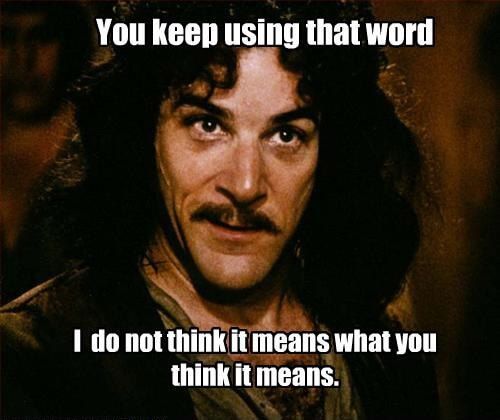Strategy - You're doing it wrong

My major for my MBA was in corporate strategy. Being rather naive of how big businesses work at the time I was loving it and making bold claims are grand gestures.
I would spend weeks researching markets, organisational behaviour and international relations in order to build watertight strategies to steer a titanic away from an immanent iceberg.
These were complete with timelines, deliverables, goals, risks and even approaches to change management.
After I completed what would be by now a tome of knowledge I would present it to my classmates for an hour and then submit it to my lecturer. Who, now that I think about it, would most likely need to then pour a large glass of wine in order to get through it.
I loved diving in deep, researching everything and developing comprehensive strategies.
Fast forward to now.
As if one person would be responsible for developing a strategy for an enterprise level organisation? Who has time for all of that at work? That would be a full time job and that person would have a team of researchers as it would be too important to stuff up.
However, that isn't the point of this post. The following is:
I feel like nobody knows what a strategy actually is.
I'm serious. I have read that many articles and spoken to that many people who say this is their strategy for x y and z and it turns out to be less than a half baked plan.
I think that everybody feels like they need to have a strategy for every individual thing because it will either make them feel like they are getting somewhere, look smart, or feel like they have done something.

Then there is my favourite people, which remind me of me at University. The people who spend the time developing an impossible to implement strategy.
Literally doing anything else is more productive than making an impossible to implement strategy.
So what is strategy?
There is an idea that everything needs a strategy and that a strategy is just a couple of sentences of what we plan on doing for the next few weeks.
A strategy is not an activity plan, it is not a check list, it is not a Gantt chart.
A strategy is a plan designed to achieve a clear measurable objective. Without a clear measurable objective there is no strategy.
I was at a conference recently and Bryan Miller - a digital fundraising expert - was speaking and he defined strategy as "a clear plan defining how you intend to get to where you are now to where you need to be, taking into account the main internal and external challenges and opportunities most likely to impact on your progress".
What I like about this definition is that it takes into account where you are now and the internal and external challenges that may present themselves.
I feel that too often people charge ahead with something without assessing the lay of land first.
Do we have the resources?
Did it work in the past?
Do we have the expertise?
Is it worth developing this expertise internally or outsourcing it?
These are all boring questions. Boring but essential for success.
Start with a hypothesis or identify a need or opportunity.
What is this strategy for? What need is it filling and what do you want to achieve? How is it going to fill in with your organisation's greater objectives? Keep it high level to begin with (not to be confused with the corporate speak for vague) as this will determine what you do next. Don't be afraid to ask why at this stage.
'We need a mobile app strategy, it is the future!' exclaims the highest paid person in the room,
'How is this relevant to our customers?' you ask respectfully,
'Because they have mobiles!' the Hippo retorts,
'Do they? Do/would they engage with our thing that way? Do we know this for sure?' you reply quizzically.
The Hippo, frustrated at not being able to think of a response, slow sinks into their chair. You watch as their eyes glaze over thinking of what you just asked. Do they?
The need identified here is for some kind of mobile strategy as it is the current emerging technology trend. This is where the next step begins.
Actually do some research and analysis.
People tend to dive into planning what they want to do rather than researching and discovering what they should do. Planning what you want to do is fun but not necessarily the best for your business.
Actually research and analyse the perceived opportunity to see if it is what it is. Validate that yes this is an opportunity. Test assumptions and don't be afraid to call it off at this stage.
If someone thinks you need a strategy to capitalise on the young mums that drive Maseratis and your research finds only 1 person in the world fits that criteria call it there. The perceived opportunity or need didn't exist. Make a note to revisit in 6 months. Move on.
Apps are a great example of people not assessing opportunities/needs well. It feels as though every business has an app to download. I am adamant in thinking that not every business needs an app.
I was going to use an example here about how an app from an electricity company would be useless as I just want to pay my bill which I can do on their website once a quarter, however then I found the AGL app and it has all the historical usage data, which makes me pretty excited. However I think the novelty will wear off soon, which is inline with current trends.
This interesting article did some analysis and found that after 90 days the average app has lost 95% of its users (it is worth a read). To add insult to industry Techcrunch posted an article awhile ago now stating that only 16% of people who experience a buggy app will try it again. Finally Comscore last year found that 65.5% of phone users download 0 apps per month on average.
Apps are a huge opportunity however after some research you find some pretty frightening statistics. The odds of success are stacked against you before you even start. There is probably lower hanging fruit than the elusive app store.
When doing analysis at this stage ensure you do both internal and external analysis - i.e. what does the market say about opportunity, what does your customer data say about it etc.
If you do validate your opportunity/need/hypothesis it is time to SWOT.
Do a SWOT analysis.
Yes, more analysis. Good strategy isn't born out of nothing after all. Time to bring out the trusty SWOT analysis - Strengths, Weaknesses, Opportunities, Threats.
Most people wouldn't have done one of these since their time at university/college however they are actually really useful, especially when done in a small group of key individuals.
Remember with a SWOT analysis strengths and weaknesses are looking at the internal aspects of the organisation whereas opportunities and threats are more external focus (however definitely still put internal things here if they come up - there are some real internal opportunities and threats with most organisations). You should be able to slot the analysis from your previous step into different quadrants depending on the results.
Be real and realistic when conducting your SWOT. If a weakness is that you lack the core-competencies in an area (i.e. app development) state it, write it on the whiteboard loud and proud. Weaknesses are nothing to be ashamed of. The reason I mention this is I've conducted SWOT analyses with a few small business owners before and their SWOTs generally look like the table below.
Strengths
Brand loyalty
Customer service
Family owned business
Opportunities
Facebook
Weaknesses
None
Threats
The internet
The government not taxing the internet enough
NBN
Dodo for making the internet too cheap
Online shopping
Mobile phones
Customers being able to better research products so we can no longer pedal our sub-standard home-brand products as luxury items
---
In the top corner of strengths you have tradition and in the bottom corner of threats is change. These business owners don't see their weaknesses, the reason for their poor business is everyone else's fault.
Examples of weaknesses can be over governance, bureaucratic processes could inhibit any momentum, over-invested in a poor technology platform, data-structure/integrity, lack of executive buy-in, small budget, lack of skills in that area, timeline, lack of resources etc.
If you don't acknowledge your weaknesses and your threats realistically you have no excuse for when you can't implement your strategy properly.
After you complete your SWOT hopefully you should have a better picture of what you are up against. Once again, if your threats and weakness columns make your opportunities look not too appealing call it off. Otherwise it is now time do create your strategy.
Time to strategise!
Finally the fun part! However it isn't as fun now as you need to address your weaknesses and threats. If you don't have the required skills investing in those skills is now a core part of your strategy where pre-analysis it may have been completely missed. This part shouldn't take that long after the SWOT.
The key part is that the strategy is your journey, the path you are about to embark upon. You need to know where you are going and you need to be able to tell when you actually get to your destination. If you have no measure for success you don't know if you have succeeded (or failed). If you don't have an objective that is measurable in some capacity you have failed at strategy.
Think of opening up Google maps and planning a trip from Newcastle to Melbourne (about a 1000 km trip).
- Where in Newcastle are you starting from (internal analysis)?
- Where specifically in Melbourne are you going (specific outcome)?
- How are you getting there (the plan)?
- Do you need to service your car first (internal analysis)?
- When is the best time to drive (external analysis)?
- If there is heavy traffic in Melbourne what other ways can you go (external analysis)?
- What can we eat on the way (external analysis)?
- Why are you even going to Melbourne again (initial validation)?
You can just jump in your car and start driving. I wouldn't, I'd at least check the oil, tires and fuel of my car first. I would also find out where I'm going specifically because Melbourne is a big place and I'm not going to stumble upon where I need to be. I can drive to a part of Melbourne and call it a win, but it may not be where I needed to be.
It is a big trip and you need to be prepared.
Implementation
A strategy lives and dies by its implementation. If you have the worlds most complicated, detailed strategy that nobody can implement you may as well use it to line the bird cage. It is useless.
Break your strategy down into sections or phases with specific outcomes for each section if it is too big or complicated.
It is better to start delivering sooner rather than later. Roll out your minimum viable product/collateral as your first phase and then add to it it until you complete your overall objective.
Closing notes
A point to note is that if you are 6 months into your 12 month strategy and the internal or external environments have changed significantly please call your strategy there, review your progress, restart your analysis and then plot your new course.
Sticking to a strategy that is sending you in the wrong direction is bad. Be strategic. Make the decision to pivot to your new course or persevere on your current course.
One final analogy. Sailing is an amazing metaphor for strategy, much better than driving. I love sailing, I have only ever been once on a tiny catamaran and it was the best. I learned a lot.
Sailing is easy if you don't have anywhere specific to go. You can go where the wind takes you and fly across the waves. Sailing gets difficult when you have somewhere specific you need to be. If the wind is opposite to where you want to go you need to plan a path that works around that. You may need to go backwards for a time in order to loop around to your desired destination. You may have to sail in a zig zag so at times you are traveling perpendicular to your objective.
However as long as you have your objective and you know the environment around you, you can find your way there.
It is really easy to have a vague plan and it is really easy to achieve a vague plan, you are more or less letting the wind control your direction and going where it wants you to.
With a strategy with a clear measurable objective you are still harnessing the power of the wind, however you are now the one in control.



